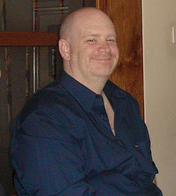Dr. Stephen L. Macknik
The Scientific American cover story Windows of the Mind said
“Once scorned as nervous tics, certain tiny, unconscious flicks of the eyes now turn out to underpin much of our ability to see. These movements may even reveal subliminal thoughts.As you read this, your eyes are rapidly flicking from left to right in small hops, bringing each word sequentially into focus. When you stare at a person’s face, your eyes will similarly dart here and there, resting momentarily on one eye, the other eye, nose, mouth and other features. With a little introspection, you can detect this frequent flexing of your eye muscles as you scan a page, face or scene.
But these large voluntary eye movements, called saccades, turn out to be just a small part of the daily workout your eye muscles get. Your eyes never stop moving, even when they are apparently settled, say, on a person’s nose or a sailboat bobbing on the horizon. When the eyes fixate on something, as they do for 80 percent of your waking hours, they still jump and jiggle imperceptibly in ways that turn out to be essential for seeing. If you could somehow halt these miniature motions while fixing your gaze, a static scene would simply fade from view.”
Dr. Stephen L. Macknik, Ph.D. was coauthor of this article and is the director of the Laboratory of Behavioral Neurophysiology at the Barrow Neurological Institute, in Phoenix, Arizona. His research interests are to explain the neural underpinnings of visual and olfactory perception in the brain. His primary interest in sensory processing is to understand how networks of neuronal cells in the brain form circuits that allow us to feel aware of our surroundings. His latest project builds on these interests by determining the brain correlates of the perception of flicker fusion in the visual system. He promotes public awareness of his and other scientific discoveries by working with several organizations that bring together scientists and the public.
Steve is a member of American Epilepsy Society, Society for Neuroscience, Vision Sciences Society, Neural Correlate Society (Founder), Association for the Scientific Study of Consciousness, Association for Chemoreception Studies, Spanish Society for Neuroscience (SENC). and Associate of Behavior and Brain Sciences.
He coedited Visual Perception Part 2, Volume 155: Fundamentals of Awareness, Multi-Sensory Integration and High-Order Perception (Progress in Brain Research) (Progress in Brain Research), and coauthored Neuronal correlates of visibility and invisibility in the primate visual system, Microsaccadic eye movements and firing of single cells in the striate cortex of macaque monkeys, The function of bursts of spikes during visual fixation in the awake primate lateral geniculate nucleus and primary visual cortex, The role of spatiotemporal edges in visibility and visual masking, Optical images of visible and invisible percepts in the primary visual cortex of primates, and Dichoptic Visual Masking Reveals that Early Binocular Neurons Exhibit Weak Interocular Suppression: Implications for Binocular Vision and Visual Awareness.
Steve earned his B.A. in Psychobiology, Biology, and Psychology at the University of California, Santa Cruz in 1991, and his Ph.D. in Neurobiology from Harvard University in 1996.
